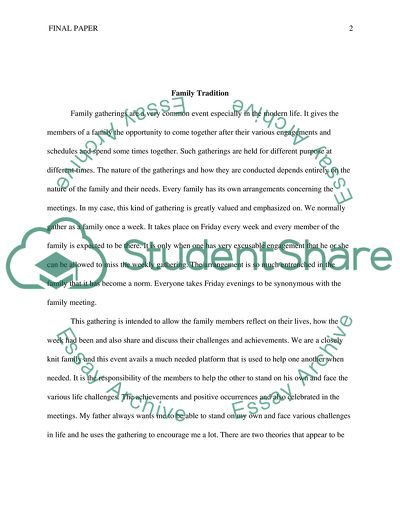Cite this document
(Family Gatherings Coursework Example | Topics and Well Written Essays - 2000 words - 1, n.d.)
Family Gatherings Coursework Example | Topics and Well Written Essays - 2000 words - 1. Retrieved from https://studentshare.org/family-consumer-science/1864205-family-studies
Family Gatherings Coursework Example | Topics and Well Written Essays - 2000 words - 1. Retrieved from https://studentshare.org/family-consumer-science/1864205-family-studies
(Family Gatherings Coursework Example | Topics and Well Written Essays - 2000 Words - 1)
Family Gatherings Coursework Example | Topics and Well Written Essays - 2000 Words - 1. https://studentshare.org/family-consumer-science/1864205-family-studies.
Family Gatherings Coursework Example | Topics and Well Written Essays - 2000 Words - 1. https://studentshare.org/family-consumer-science/1864205-family-studies.
“Family Gatherings Coursework Example | Topics and Well Written Essays - 2000 Words - 1”. https://studentshare.org/family-consumer-science/1864205-family-studies.


